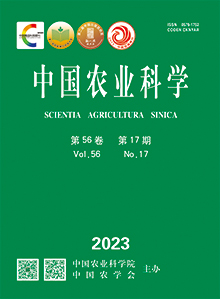【Objective】 By using flavor detection technology, the effect of heat treatment on Nanjing water-boiled salted duck’s warmed-over flavor (WOF) was investigated, and the main components of warmed-over flavor were identified. The study could fill the gap in research on warmed-over flavor of Nanjing water-boiled salted duck, as well as provide a basis for controlling the odor associated with poultry processing. 【Method】 The raw materials for the Nanjing water-boiled salted duck were 12 cherry valley duck legs, washed, dry pickled, wet pickled, cooled, and boiled. The samples were vacuum packed in high-temperature retort pouches and randomly divided into four groups after cooling. In order to examine the changes in volatile odor substances in water-boiled salted ducks after heat treatment, one group was used as a control without heat treatment, and the other three groups were heated at different temperatures (80 ℃ 50 min, 100 ℃ 30 min, and 121 ℃ 15 min). By using HS-SPME-GC-MS in combination with electronic nose and sensory evaluation, the effect of heat treatment on Nanjing water-boiled salted duck's warmed-over flavor was studied by cluster analysis and PLS-DA. 【Result】 Under different heat treatment conditions, Nanjing water-boiled salted duck contained different volatile flavor substances. Sensory evaluation showed that the highest warmed-over flavor was found in the 121 ℃ heat treatment group, followed by 100 ℃ and 80 ℃ group, and the best flavor was found in water-boiled salted duck without heat treatment. A total of 78 flavor compounds were detected in the four groups, mainly including aldehydes, ketones, hydrocarbons, alcohols, nitrogenous sulfur, and benzene. These 78 flavor substances were analyzed for OAV, and 22 active odors were detected with OAV>1, among these 22 active odor substances, cluster analysis showed that Valeraldehyde, 2-Heptanone, Decanal, Dodecanal, Octanal, Hexanal, Heptanal, Nonanal, 2,5-Octanedione, 1-Octen-3-ol and 2-Pentylfuran were the most abundant in the 121 ℃ group. Nonanal, Octanal, Valeraldehyde, 1-Octen-3-ol, and 2-Pentylfuran were found to have VIP>1 and the highest content at 121 ℃ in the OPLS-DA analysis (P<0.05). 【Conclusion】 It has been found that heat treatment at 121 ℃ increased oxidative degradation of lipids in water-boiled salted duck, significantly reduced the content of representative aroma substances, and increased the amount of representative odor substances. Nanjing water-boiled salted duck’s warmed-over flavor mainly consisted of Nonanal, Octanal, Valeraldehyde, 1-Octen-3-ol, and 2-Pentylfuran.









